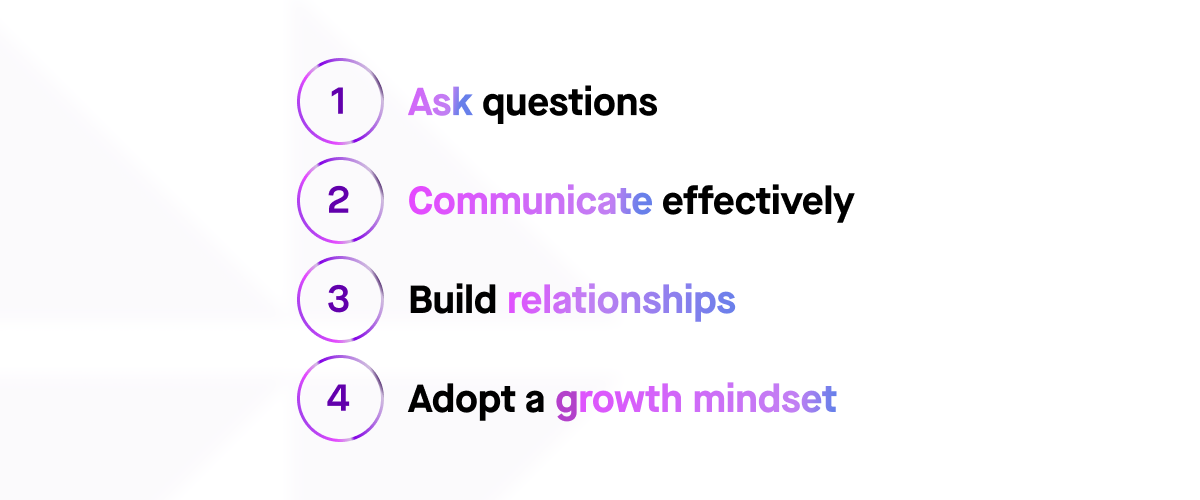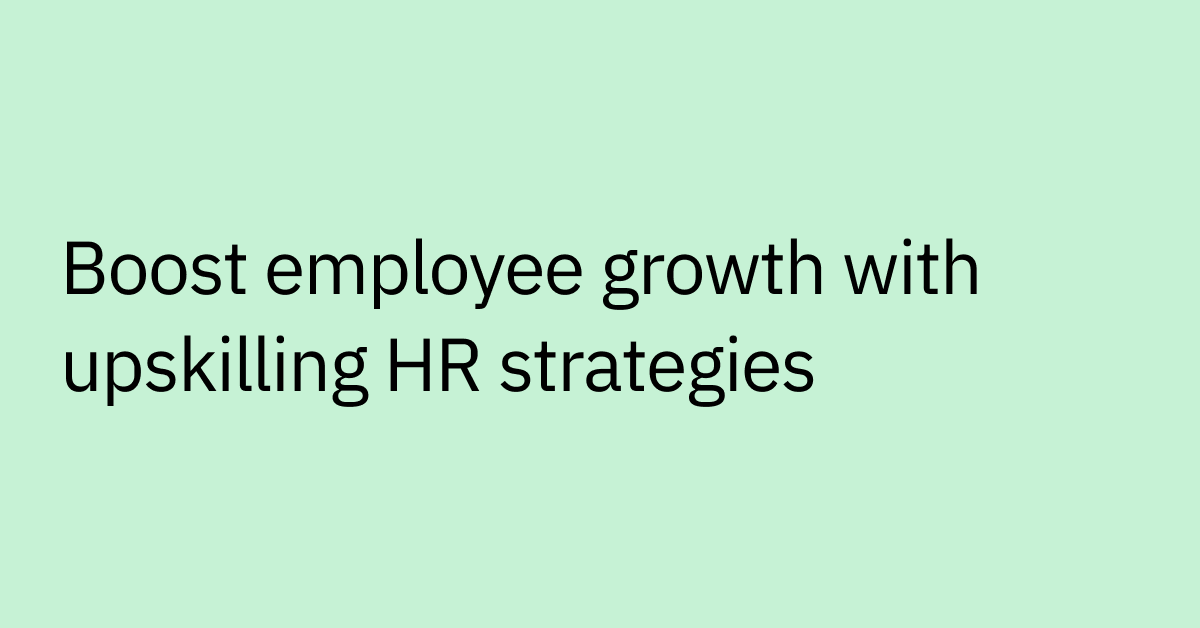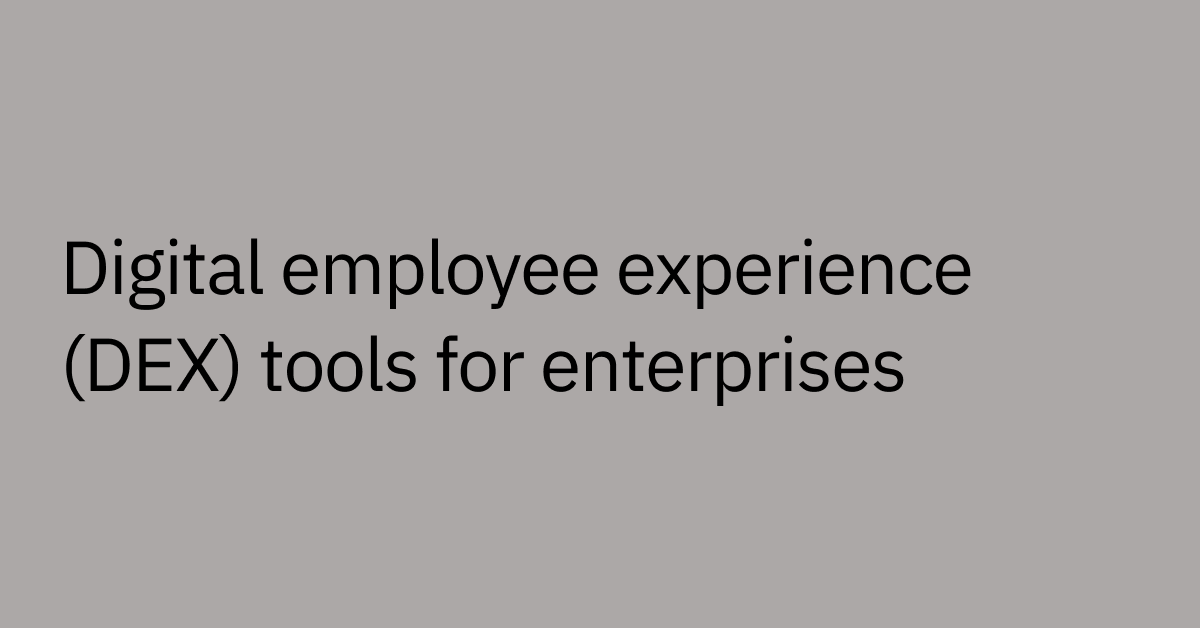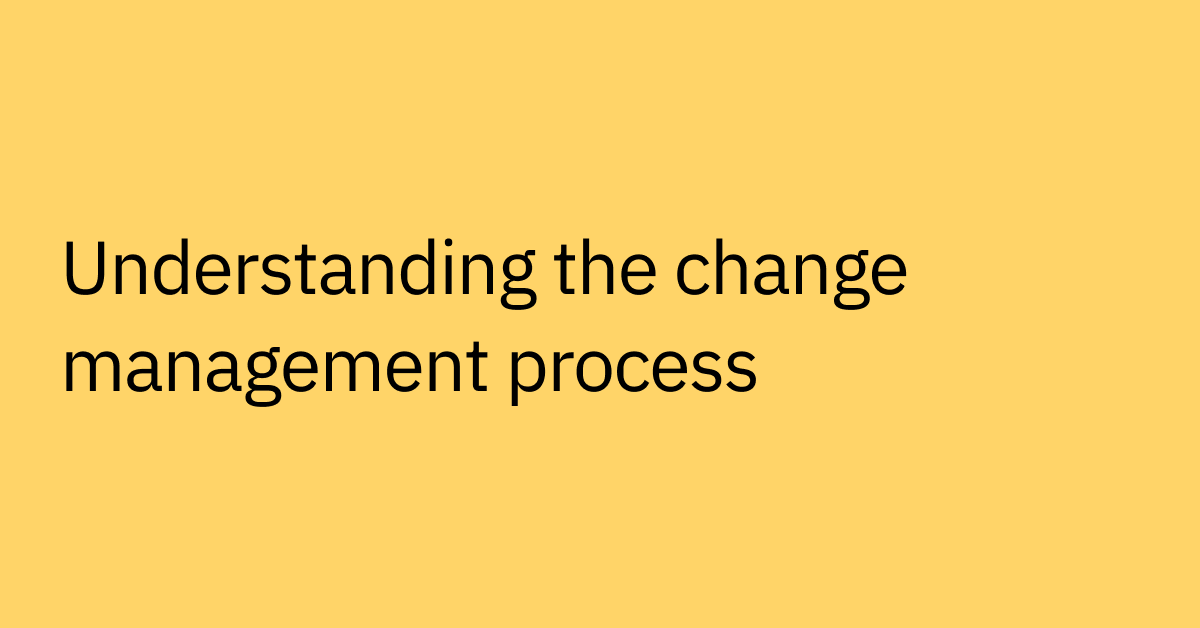Being a new CIO is daunting. You’re in charge of solving big problems across your organization, and you need to create impact fast. That said, challenging the status quo is hard. And it’s even harder when you’re not yet embedded in your organization.
Whenever I consider this challenge, I am immediately drawn to Yousuf Khan. Currently a Partner at Ridge Ventures, Yousuf has over two decades of experience as CIO. He's mastered what it takes to lead an IT organization, and given his extensive experience advising new leaders, he’s uniquely qualified to offer a perspective on how to succeed.
Recently, I had the great privilege to sit down with Yousuf. In the conversation below, you’re not going to find specific metrics to care about or specific tools to invest in. That’s not what’s most important.
What’s most important for anyone stepping into a C-level role is the ability to make the move from functional expert to leader and executive. Yousuf and I both know from experience that this transition involves a massive mindset shift. And that’s why I’m excited to share these insights with you. Let’s dive right in.
Bhavin: It can’t be easy to step into an important job like CIO and just know what’s going on from go. What’s the fastest way to get a complete view of your organization?
Yousuf: Ask questions and listen. From day one, you need to kick off a continuous top-down review of your organization. That starts with your own onboarding. Since you’re new to the organization, you have all the benefits of being an outsider. Ask yourself, “Are new employees having a great experience with IT during the first week?”
So put yourself in the shoes of the tens, hundreds, thousands of employees who’ve gone through the same experience. Then, look for room for improvement. Ask the obvious questions of yourself, your team, and other teams. What’s working? What isn’t working? Why did we not mention this new initiative?
It’s important to use your common sense. Dig into the ticket queue to understand the pulse of the IT organization: What frustrates people? What do they care about? Why are 50% of tickets about Salesforce? As you get closer to the everyday issues, you’ll get a clearer picture of what’s actually going on. It doesn’t take much to see the patterns and where the problems are.
It’s just as important to engage with your fellow executives and figure out what the perception of IT is, as it is to identify the specific issues that are causing trouble.
Perception is the operable word. An employee’s viewpoint is steeped in their reality. And in my experience, there’s a pretty consistent gap between what IT can do, change, and enable versus what people think IT can do, change, and enable.
Why not aim to sit in another executive leader’s all-hands meeting to hear if anything that relates to issues with systems or data. These are not just their problems. These problems are your problems.
Armed with feedback from these conversations, you can better position your vision for the future of the IT function and prioritize the initiatives that will transform the way your new organization perceives your role and your team’s role.
The last thing I’ll mention is this: You need to lean into your experience as an IT leader. You don't have to have some internal reference point to assess what's working and what isn't. Use your experience to question the status quo if something looks off.
Bhavin: I know from past conversations with you, as well as my own experience, that it’s important for every new leader to have a vision. But, new leaders also have a lot on their plate. How do you prioritize which initiatives to tackle first?
Yousuf: First off — having a vision for the future is hugely important for any new CIO. But you also need to understand that priorities are constantly changing because business environments are constantly changing.
To look at an example, two years ago, the number one priority was enabling remote work. You better have Slack or Teams, and you better teach your employees to properly use Slack or Teams, or you’re going to fall behind. Now, the priority is budget optimization and automation because, hey, guess what? The economy's in a bit of a downturn. So regardless of that original vision — certain initiatives aren’t going to happen.
When you have to decide where to focus your energy, personally, I recommend a prioritization matrix. On one axis is priority (how much is this initiative going to move the needle?), and on the other is complexity (how many resources will be required to enact this initiative?).
By mapping different initiatives on this matrix, I’m better able to visualize the trade-offs. Maybe I have one big, high-priority initiative, but it will take a lot of time and energy to get it done. Does that mean I sacrifice three smaller, low-priority projects to be able to do it? In the end, what matters is focusing on what will bring me the biggest win.
 Figure 1: Good decision-making is all about understanding the trade-offs between priority and complexity.
Figure 1: Good decision-making is all about understanding the trade-offs between priority and complexity.
All that said, prioritization is something that is best done collectively. Given that priorities shift on a regular basis, the best CIOs, in my viewpoint, are the ones who prioritize in partnership with their executive team. Working with other executives not only gives you an opportunity to communicate your vision, it also lets you triangulate with other teams’ goals and work towards a common purpose.
The point is — CIOs have to fix everyone else’s problems. Solid internal partnerships can give you access to information that makes it seem like you can see around corners because you know what’s affecting each business division, and you’re working to fix those problems proactively.
Knowing what each team’s biggest pain points are means that you suddenly have the tools you need to solve the problem. Are salespeople complaining about how complex Salesforce is? Are engineers waiting too long for hardware? Are investors concerned about profitability? Knowing what’s challenging other company leaders allows you to properly prioritize solutions and be proactive about solving them.
A simple “Let me fix that problem for you” can go a long way.
Bhavin: How do you measure success? Is there a framework that you recommend?
Yousuf: So — no. There’s no one-size-fits-all approach to benchmarking. Measuring success involves a lot of intuition and practice. It’s tough because the shape and strategy and philosophy of every company are different. And as a result of that, IT operations are kind of all over the map, which is why I say that quantifying success is more about intuition and your experience as an IT leader. Of course, there are some quantitative measures to take into account, but these represent operational improvements, not the results of a strategic change in the short term.
And that's why being part of a CIO community is very important. If you’re a new CIO, meeting and engaging with other CIOs in your network will offer you a leg up. Other leaders can offer a different vantage point and call out things you should look out for.
You’ll learn more from failure and mistakes than from success. Work to learn from other CIOs on a regular basis.
 Figure 2: Success sits at the intersection of your ability to provide a high-quality employee experience and run efficient IT operations. The greater the overlap, the greater your success.
Figure 2: Success sits at the intersection of your ability to provide a high-quality employee experience and run efficient IT operations. The greater the overlap, the greater your success.
All that said, I’ll share my perspective: Measure success by your ability to address pain points efficiently. If a certain process is taking long, is frustrating, or is wasting resources, it shows up. It shows up in meetings. It shows up when you want to get things done.
That’s when it’s time for you to start asking questions: What process is causing the pain? How can we iterate? Can we automate? Does the process need to be removed? Make the necessary changes and revisit the initial pain point. Did you solve the problem? Yes? Well, that’s success.
Bhavin: You briefly mentioned automation. CIOs — and technology leaders in general — talk a lot about automation and leveraging AI to solve problems. It’s becoming a key part of everyday business operations. How do you decide where automation can play an important role?
Yousuf: CIOs, IT leaders — we’re geeks. We like to solve problems with technology and automation. We’re always looking for the next opportunity. Mainly, it takes a lot of pure observation and analysis.
To back up a bit, one of the key anchors for a CIO role is to drive employee productivity. And a big part of increasing productivity is building a great experience and ensuring that every employee can easily get what they need to get their job done.
When I’m looking to deploy automation or AI, for me, it's a very binary decision. I figure out which processes are manual, cumbersome, and repetitive. Then, I look for ways to automate. And hopefully, automate in a way that doesn’t just create more work for everyone.
To go back to the prioritization matrix I mentioned earlier, sometimes CIOs get fixated on solving a problem that helps their twenty or so agents be more efficient. And that’s great! But it’s also important for CIOs to more often look for opportunities to make all employees or a particular department more productive instead.
Automation has a role to play on both sides of the service desk. Because, again, perception matters. By improving the operations of not just your own team but the company as a whole, you’ll make a big impression on other company leaders and how they understand IT’s function.
I mean, if something, anything is taking an exorbitant amount of time and resources, then you're asking yourself why. Is there anything I can change to speed up the process? Is there a technology I can use? Is there a vendor other CIOs are using successfully?
So, to sum it up: Automation, obviously, can play a massive role in your IT operations. The key is finding the most practical and the most impactful use cases within your organization. And to do that, it goes back to your first question. You constantly have to pay attention, looking for what’s working and what’s not.
Bhavin: We’ve covered a lot of ground so far, and something that keeps coming up is how important it is for IT leaders to form relationships with other executives. What advice can you give to new CIOs looking to quickly get a seat at the table?
Yousuf: To start — not all C-level executives are on the same footing. The CIO’s role evolved only recently. It’s not just about “keeping the lights on” anymore. CIOs have to be ready to work alongside CEOs and other C-level executives.
To build good partnerships among the executive team, you’ve got to be excellent at communication. You’ve got to be excellent at communicating within your team, across the company, and with the executive team.
Be very clear about your roadmap and your vision for the company from day one. Then continue to communicate that plan on a forward basis. The CIO role might just be the most cross-functional position in every company. So really, to be successful, you’ve got to communicate effectively.
The other piece of getting a seat at the table is by defining yourself as a leader. The “table” is for leaders, so you have to be a leader to get a seat at the table.
You can be a very, very good manager. You can do that really well. But if you're not a leader capable of making hard decisions, enabling people, and executing change across your company — you’re not going to get that seat. It’s fair to say that as a new CIO, you can do everything I’ve suggested so far, but if you don't have the ear of the CEO and other execs, you won't be able to realize your vision.
And to wrap up my answer here, the number one thing you can do is to be an active part of the CIO community. You’ll be able to learn more from your peers’ experiences and strategies than anything I could say in a single interview.
Bhavin: Speaking of picking the brains of the CIO community — one last question: Is there anything you learned the hard way in your career that you wish someone had told you?
Yousuf: Oh, 100%. Feedback. I never got enough feedback. And as a result, I wasn’t able to develop my career as much or as fast as I would have wanted. If I could turn back the clock, I’d make sure that when I became a CIO, I’d make sure that I got plenty of feedback and was consistent about doing that early, both informally and formally. Feedback gives you an amazing opportunity for character building — and to show that you’re interested and capable of improving yourself.
 Figure 3: Continuous feedback helps you and your team to develop the skills needed to succeed.
Figure 3: Continuous feedback helps you and your team to develop the skills needed to succeed.
Giving feedback is just as important as getting it. You’ve got to connect with your team. Your team’s morale and motivation hinge on your ability to think about and demonstrate an interest in your people’s careers. And your success as CIO hinges on your team’s ability to perform. So give your team the information and the support they need to be their best.
CIOs, if you only read one thing, read this:
Let’s be honest. If you’re a new CIO, you don’t have a lot of time. So here’s the TLDR.
It should go without saying: Today’s CIO jobs are big, complex roles. To succeed, new IT leaders will have to make their mark fast.
That’s why I think this conversation with Yousuf is incredibly valuable for any IT professional looking for an edge. Given his wide variety of experience, Yousuf’s able to offer a uniquely insightful perspective on what it takes to “crush it” as a new CIO. He’s seen firsthand how the massive disruption of the past few years has led to a unique moment for leaders, and businesses cannot afford to allow leadership to only focus on just one part of the business.
Before I sign off, let's revisit four core themes from this conversation:

- Ask questions. You can only solve your company’s biggest, most impactful problems when you know what’s holding your team, your fellow leaders, and your company back. So ask questions from day one.
- Communicate effectively. How you communicate with others affects the way they perceive you, your role, and your ability to impact your company's future.
- Build relationships. Even the best leaders can’t tackle their company’s biggest challenges solo. Rely on a supportive peer group and lean on your team. And remember, the leaders with the greatest influence and legacy are those who work together and empower others.
- Adopt a growth mindset. All feedback is good feedback. Listen actively, take the time to understand, and then embrace challenges as opportunities to improve yourself. With this approach, you won’t be a new CIO for long — you’ll be a great leader.
Know exactly what’s slowing your people down with Employee Experience Insights.
Sign up for a demo today to see it in action.
The content of this blog post is for informational purposes only.



